A Sweet Journey Through The World Of Vegan Sushi
You probably think sushi is one of those foods that can’t be made vegan, right? I mean, fish is something quite hard to emulate.
Well, something that most people don’t realize is that there is an entire world of popular vegetarian sushi, made with no fish whatsoever!
And on top of that, it’s just as delicious as traditional sushi. We’re going to walk you through the amazing world of vegan sushi that is sure to blow your mind.
But first, to truly understand the art and passion of making sushi, let’s go over a brief history of the cuisine.
he History of sushi – 寿司
The History of Sushi – 寿司
The origin of sushi is believed to have happened during the second century (A.D.) in Southeast Asia.
It was loved, not only for being tasty but also for increasing the shelf life of fish.
Locals would cure meat and fish, wrapping it in rice to preserve its freshness, and then left it to ferment for several months. Eventually, they would discard the rice and eat the cured insides.
The bite-sized delicacies known as sushi spread like wildfire all throughout China, eventually reaching Japan. Its popularity exploded soon after.
The Japanese started eating three meals a day, rice was boiled instead of steamed, and of large importance, rice vinegar was developed soon after.
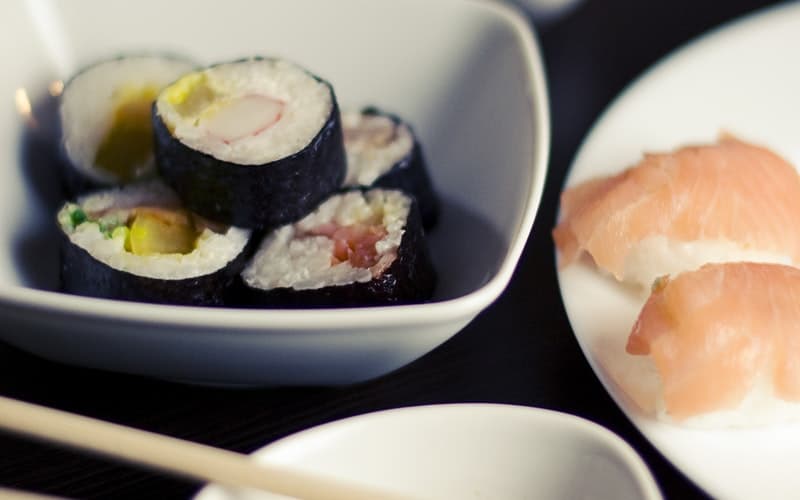
Ten centuries later, sushi chefs started to add vinegar to their sushi to aid in the fermentation process. By doing this, they didn’t have to wait so long for the sushi to be prepared properly.
In the 1820s, Edo-style sushi was introduced, which is essentially the addition of raw fish. This style is widely available in the majority of sushi restaurants.
100 years later, vendors invented nigiri-sushi: raw fish placed on top of shaped rice.
In the past 20 years, as sushi has been recognized as a healthy alternative, sushi restaurants have taken off in the United States.
The California Roll is a traditionally non-vegan sushi roll designed for American taste buds that uses imitation crab meat (Made of real fish), and was introduced to people who may be wary of the idea of sushi.
A sushi pioneer:
Jiro Ono is a Japanese chef who is credited by food critics as the greatest sushi craftsman alive. He is also the owner of Sukiyabashi Jiro, a three-Michelin-starred, internationally renowned, Japanese sushi restaurant in Tokyo.

At his restaurant, there is no menu: the dishes are selected by Ono himself. A standard meal, roughly covering 20 courses, costs between $300 to $400 per person in his restaurant.
Sushi 10
The Sushi Sensei Starter Kit 🥢
Alright, so now it’s time to get serious. *cracks knuckles*
Here are some important and optional tools to have.
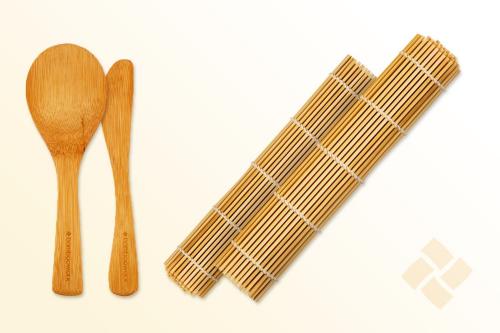
A Sushi Mat: You’re going to want a sushi mat. You can pick one up on Amazon for around 5 bucks. For an even more high quality mat, you can go with this one for about double the price of the other one.
Chopsticks: Chopsticks are another must-have. Once you learn to use them, they become a very intuitive utensil for eating sushi. Amazon has an entire category section dedicated to chopsticks.
Sushi Rice: Although I didn’t plan to cover ingredients in this section, I thought it was important to mention sushi rice. Something you might not know is that rice in sushi isn’t just plain, old white rice. It’s actually specially seasoned white rice. Nishiki is a good brand. You can even make your own sushi rice if you’re up for it.

(Optional) A Fancy Gadget to Automate the Process? The Sushiquik is a neat gadget that makes sushi-making easier for beginners. It’s also a great way to get the kids involved in sushi making being that it is safer (more precise knife cutting) and harder to mess up. It’s far from traditional but great for some people.
Sushi 101: Learn the art
So, now that we can all call ourselves Sushi Historians, you’re probably wondering if it is possible for somebody completely new to make decent sushi, especially when there are people dedicating their lives to perfecting the art.
While it all depends on the type of sushi you make, but I can guarantee you that anybody can create some darn tasty sushi on their first try!
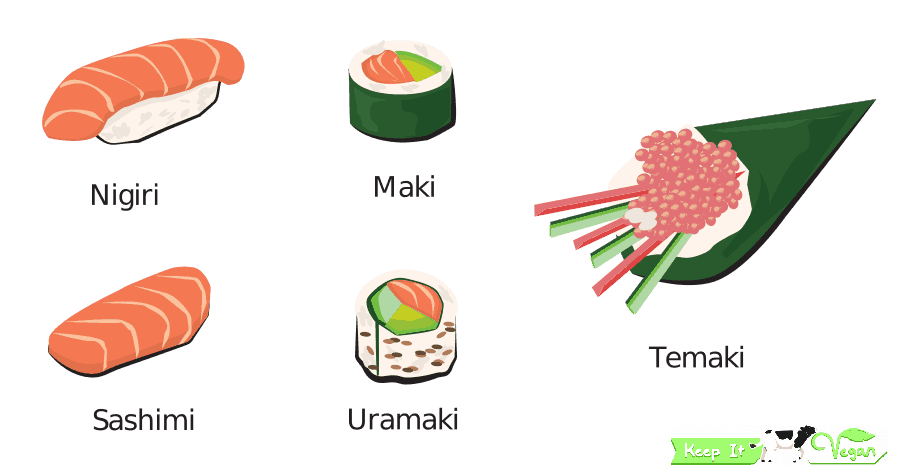
The five different types of Sushi
The 5 main types of sushi are Nigiri (A topping, usually fish, served on top of sushi rice), Sashimi (Fish, or shellfish, served alone with no rice), Maki (Rice and filling, wrapped in Nori, which is seaweed), Uramaki (Rice on the outside and the seaweed wraps around the filling), Temaki (Sushi that has been hand-rolled into a cone shape).
It may seem trivial to you, there are some general etiquette tips that help you enjoy your sushi to its fullest.
For one, learning how to use chopsticks helps. Not only will you start to feel like a sushi elitist, but once learned, chopsticks will actually be quite an intuitive utensil for eating sushi.
To give you an idea of the benefits of chopsticks, sushi is quite delicate.
If you jam your fork into a piece, there’s a good chance that you’ll break the sushi, causing it to crumble. Plus, there’s a 100% chance you will look a bit strange to those around you, using a fork for your sushi eating needs.
My favorite way to learn new skills and topics is through YouTube. So here’s a killer video for all of you chopstick newbies!
Sometimes it’s even ok to use your hands to eat sushi. Make sure to check out SushiFAQs guide to sushi etiquette. Skip down to the part about dining etiquette.
One thing I learned is that if you are picking a piece of food off of a friend’s plate, the polite way is to invert your chopsticks and pick up the food using the end that you hold.
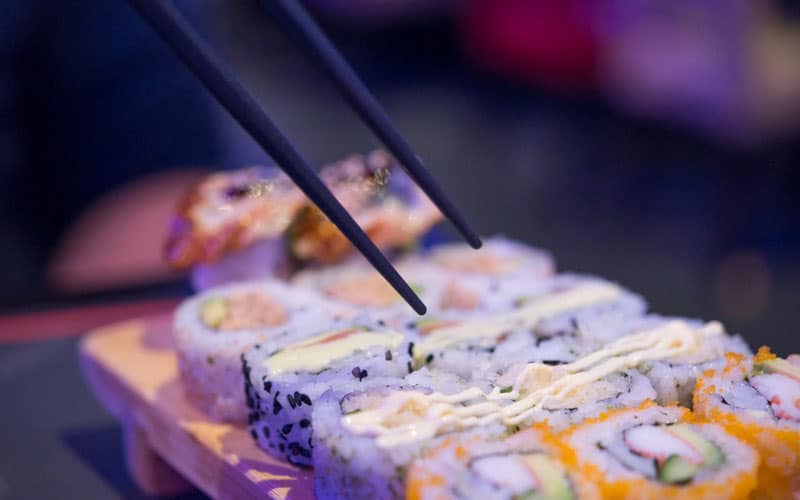
Another tip is to eat sushi in one bite – not multiple! It is believed that good quality sushi is designed to be eaten in one bite and it can be a mess if you take multiple bites.
On top of that, make sure you don’t dip the sushi into soy sauce. The rice is seasoned and flavored with the chef’s expertise. Dipping it into the soy sauce is a diss to the chef.
Lastly, avoid taking sushi leftovers home with you. To quote the Thrillist: “Some foods are great the next day — sushi isn’t one of them”.
How to veganize sush
How To Veganize Sushi
So, we all know that sushi is traditionally made by spreading seasoned rice, vegetables, and raw (or cooked) fish onto a sheet of seaweed, then rolling it up and cutting the roll into slices.
Since fish is usually assumed the main factor of sushi, many people believe that it’s a mandatory ingredient.
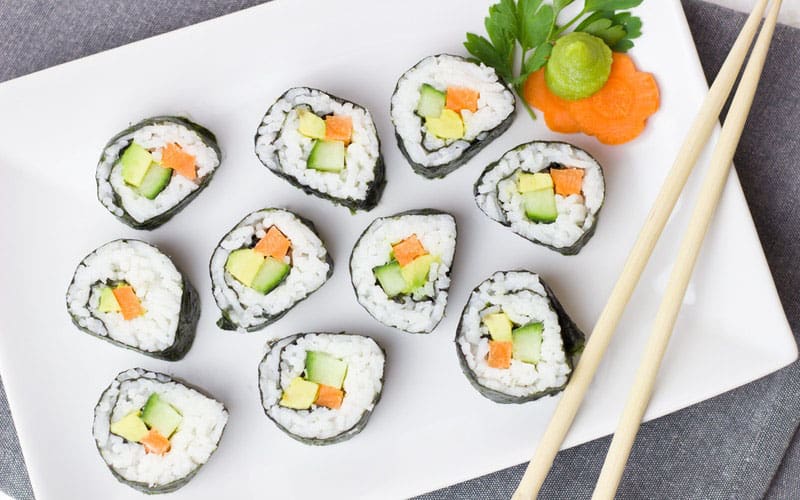
There are, however, some amazing fillers for sushi, such as:
- Avocado
- Cucumber
- Shiitake
- dot-circle-omushroom
- dot-circle-oBell pepperpepper
- dot-circle-oCarrot
And lots more….
Our Favorite Sushi Recipes
Our favorite vegan sushi recipes
- Something Vegan’s Veggie Sushi
- Dr. Axe’s Vegan Sushi
- external-link-squareSpicy “Tuna” Sushi
- external-link-squarePETA’s Vegetarian Sushi
How To Order Plant-Based At Your Local Sushi Joint
How to order plant-based at your local sushi joint
As long as the chefs have the ingredients in their kitchen, they will happily serve the sushi that their customers request.

You could ask for a California roll without fish or a grilled shiitake nigiri. The garnishes for sushi are gari (pickled ginger slices) and wasabi (Japanese horseradish).
Americans like to mix gari and wasabi in soy sauce, but it isn’t the authentic way Japanese way of eating sushi. Be careful as some soy sauce contains fish, so be sure to ask!
Beware of dashi
Dashi (fish broth, fish paste, fish flakes) is what makes every Japanese food taste like fish.
It is included in many dishes like miso soup, tamagoyaki, oden and even many vegetable dishes at restaurants. It’s almost in all soup broths. So be sure to check.
Try Inari!
Inari sushi isdeep-fried tofu ‘pockets’ filled with sushi rice. You can enjoy these bites of tasty heaven on their own, or combine with other sushi.
Here’s an easy recipe to follow by The Vegan Zombie:
I hope you have enjoyed this article! If so, please share it with a friend.
Enjoy sushi and remember to KeepItVegan!
Leave a Comment